- Home
- John Irving
My Movie Business: A Memoir Page 7
My Movie Business: A Memoir Read online
Page 7
My son Brendan had just won the New England Class A
title at 135 pounds, and I had happily retired from coaching wrestling—again. I had first retired in 1983, when my son Colin won the New England Class A title at 160
6190_Irving_14_js.qxd 8/23/99 5:43 PM Page 83
M Y
M O V I E
B U S I N E S S
8 3
pounds. But this time I was forty-seven; I knew I had coached (and had retired from coaching) for the last time.
Sometime that spring, when A Prayer for Owen Meany was solidly holding the number-two position on the New York Times bestseller list, I talked to Salman Rushdie on the phone. (We’d met in London ten years earlier and had been friends ever since.) Following the death threat against him (in February 1989), Salman had gone underground; he was somewhere in England, I presumed, when he
called. The number-one bestseller on the New York Times list that spring was The Satanic Verses, the book responsible for the fatwa against Salman.
I made a mock complaint to him . . . something along the lines that Owen Meany would surely have made the number-one spot on the Times list if I hadn’t had the misfortune to be published at exactly the same time as his Satanic Verses.
“You want to trade places?” he asked.
No. I did not.We talked for a while about the next novel I thought I wanted to write. “It’s about an Indian-born doctor living in Toronto,” I told Salman. “He’s a Canadian citizen, but he doesn’t feel assimilated into Canadian culture—he doesn’t feel very Canadian. And when he goes back to India, which he does periodically, he doesn’t feel like an Indian, either. He’s a foreigner both in his country of birth and where he lives.”
6190_Irving_14_js.qxd 8/23/99 5:43 PM Page 84
8 4
J O H N I R V I N G
“So what’s different, or at least interesting, about him?”
Salman asked.
That was the problem, I admitted. I was working on it; that was all I could say.
Something about orthopedic surgery seemed to me to
be the key. Could it have to do with the difference between the kind of patients an orthopedic surgeon sees in Toronto as opposed to Bombay? There are more crippled children in India. Then I read an article in a medical journal on the subject of the most common form of short-limbed
dwarfism, achondroplasia, for which (at the time) a genetic marker had not been found. Maybe my doctor was an amateur geneticist, taking blood from achondroplastic dwarfs? That might be a little different, or at least a little interesting.
That’s as far as I was with A Son of the Circus, which I would end up dedicating to Salman, when the photographer Mary Ellen Mark and her husband, Martin Bell, a British filmmaker, came to visit me in my house in
Sagaponack. (Martin has since become an American citizen; he directed American Heart. )
Mary Ellen and Martin were old friends of mine, but
we’d never worked together. That weekend they brought some new photographs of Mary Ellen’s to show me. She had spent a lot of time photographing the small circuses of India, principally the child performers in those circuses.
John Irving as the disapproving stationmaster.
(All photographs: Stephen Vaughan/©Miramax Films)
The director Lasse Hallström directing John Irving, the disapproving stationmaster, on the set of The Cider House Rules
in Bellows Falls,Vermont.
The producer Richard Gladstein with the disapproving stationmaster.
A younger Dr.Wilbur Larch (Michael Caine) and Nurse Angela (Kathy Baker) and Nurse Edna (Jane Alexander) watch Homer Wells leave the orphanage for Homer’s second adoption; they know he’ll be back.
Homer Wells
(Tobey Maguire),
the unadoptable
orphan.
Dr. Larch (Michael
Caine), the orphanage
physician—obstetri-
cian, gynecologist,
abortionist.
Homer—
physician-in-training,
the abortionist’s
apprentice.
Larch and Homer, naming the babies.
Diagnosing Dorothy’s disintegrating uterus. The Dorothy scene was cut from the film.
Lasse directing the
children in the dining
hall at St. Cloud’s.
Spencer Diamond is
Curly.
Larch reading Dickens to the boys in the bunk room.
Nurse Edna (Jane
Alexander) in the girls’
bunk room.
Buster (Kieran Culkin).
Homer carrying the operating-room pail to the
incinerator, Buster following.
Nurse Angela (Kathy Baker) holds the ether cone,
Dr. Larch the ether bottle.
Larch giving himself ether. An accidental overdose will eventually kill him.
Nurse Angela wakes Larch from an ether sleep.
Mary Agnes (Paz de la Huerta).
Nurse Edna discovers the twelve-year-old girl by the incinerator.
The twelve-year-old girl (Kasey Berry). She dies of a botched abortion; she comes to St. Cloud’s too late for Larch to save her.
Lasse directing Michael,Tobey, and Jane in the operating room with the twelve-year-old girl.
Lasse directing Erik Sullivan as Fuzzy.
Michael Caine called Erik a “treasure”—a gift to the film.
Fuzzy in his breathing tent.
Lasse with Charlize Theron (Candy) and Paul Rudd (Wally).
When Candy arrives at the orphanage in St. Cloud’s, the orphans swarm around her and Wally’s car.
Candy being
interviewed in
Larch’s office,
before her abortion.
(“How many months
are you?” Homer
asks her.)
Fuzzy watching Homer Wells leave St. Cloud’s.
The producer (Richard Gladstein) and the screenwriter (John Irving) on the set of the apple orchards and the cider house in Dummerston,Vermont.
Wally brings Homer to the cider house for the first time.
Mr. Rose (Delroy Lindo) with his daughter, Rose Rose (Erykah Badu).
Rose Rose. (“I know when someone is in trouble,
Homer, and you is.”)
Muddy (K.Todd Freeman). (“This here sensitive-lookin’
fella,” Mr. Rose calls him.)
Peaches (Heavy D) and Hero (Lonnie R. Farmer) laugh when Homer reads the first of the cider house rules: “Don’t smoke in bed.”
Wally driving Homer through the orchards. (“Close your eyes,”
Wally tells him. “This is flying on instrument.”)
Homer Wells, apple
picker.
Mr. Rose: “You don’t wanna go into the knife business with me.”
Jack (Evan Dexter Parke) is in the foreground of the scene.
After the knife fight—Mr. Rose has won the fight but he cut himself in the process—Rose Rose stitches up her father’s hand.
Homer is critical of her method. (“I s’pose you is a doctor, Homer,”
Rose Rose says. “Almost,” he tells her.)
The end of the first harvest; the pickers are leaving in their truck, on the road again.
Lasse on the beach in Maine, preparing the love scene between Homer and Candy.
Homer and Candy on the beach.
Candy with Homer in the cider house. Wally’s away at the war, and the pickers are gone; apples are not in season.
Candy is hiding.
Olive (Wally’s mother)
has just brought Homer
some extra blankets
for the winter.
Candy is getting dressed in a hurry. She and Homer have heard Mr.
Rose’s truck; the pickers have returned for the second harvest.
Larch showing Fuzzy King Kong, a private screening. The film breaks—
Larch calls it “Homer’s splice”—and Fuzzy dies.
Larch and Buster bury Fuzzy. (“We’ll tell the little ones he was adopted,” Larch says to Buster. Buster questions why the little ones will believe it. “They’ll believe it because they
want to believe it,” Larch replies.)
Edna and Angela with Dr. Larch in his office. Larch has falsified a college and a medical-school degree for Homer Wells.
Angela complains that Homer’s credentials are against the law.
“Don’t you be holy to me about the law,” Larch tells her. “What has the law done for any of us here?”
Larch reads Homer’s letter; Homer says he’s not
coming back to St. Cloud’s. (“I fear we’ve lost him to the world,”
Larch will tell Angela.)
Major Winslow (Colin Irving) delivers the news about Wally to Wally’s mother, and to Candy and Homer. Wally has been shot down over Burma; he has encephalitis B. (“Captain Worthington is paralyzed . . .
from the waist down. He won’t walk again.”)
Homer and Candy on the dock by the lobster pens, after hearing the news about Wally. Homer has told Candy that Wally can still produce children; he can have “a normal sex life.” Homer also tells her that he’ll do whatever she wants, but Candy says she wants to do “nothing.”
Lasse directing Tobey before the abortion scene in the cider house.
Homer prepares his
surgical instruments
before performing
the abortion on
Rose Rose.
After his daughter’s abortion, Mr. Rose confronts Homer over the cider house rules; the rules are tacked onto the beam between them.
(“Them rules ain’t for us,” Mr. Rose tells Homer. “We makin’ our own
rules, every day. Ain’t that right, Homer?”)
Dr. Larch’s burial; Larch is buried in the graveyard at St. Cloud’s, beside Fuzzy and the twelve-year-old girl.
Homer Wells comes home to St. Cloud’s.
Lasse directing Tobey on how to read the passage
from David Copperfield to the boys.
Homer, like Larch, reading Dickens to the boys in the bunk room.
6190_Irving_14_js.qxd 8/23/99 5:43 PM Page 85
M Y
M O V I E
B U S I N E S S
8 5
And there suddenly, in the photographs, were my doctor’s dwarfs—achondroplastic dwarfs, the clowns of the Indian circus. My doctor could make a study of them; he could draw their blood, I thought.
This led to a further thought about my doctor: of more interest to me than his profession, which was orthopedic surgery, was his passionate amateur pursuit—the dwarfs’
blood, the search for the as-yet-unidentified gene for achondroplasia. But what might the doctor’s other hobbies be? I’d known many doctors who wanted to be writers, or who fancied themselves as writers already.Why not make my doctor a screenwriter? Of course I knew he would be a bad one, just as I knew he would never find the genetic marker for achondroplasia. (So much for hobbies.)
Something magical happened later. Almost simultane-
ously with the publication of A Son of the Circus, a doctor in California found the gene for achondroplastic dwarfism.
In a letter, he admitted to me that he’d found the genetic marker for achondroplasia without having met a single dwarf.
But at the end of the summer of 1989, Martin Bell and I knew only that we had a story (or parallel stories) in common. Martin wanted to make a documentary film
about the child performers in an Indian circus—probably about one child performer in particular, he said. Would a feature film on that subject interest me? Martin asked. Did
6190_Irving_14_js.qxd 8/23/99 5:43 PM Page 86
8 6
J O H N I R V I N G
I want to write a screenplay about the fate of a child (or children) sold to an Indian circus? We could go to India and research the story together.
That fall, I wrote the first draft of a screenplay—at the time titled Escaping Maharashtra. I also took some notes for my novel about an Indian-born doctor and his dwarf-blood research, and his work with crippled children in Bombay. The doctor is passionate about circuses because of the dwarfs, but he also knows that many of the performers are children who’ve been sold to the circus by their parents. (The parents know that their children will have a better life in the circus.) The doctor, in addition to his dwarf research and his screenwriting, develops another amateur pursuit—rescuing street children from Bombay and placing them in Indian circuses.
Naturally the circuses will take only the most talented acrobats and street performers among these abandoned children. Mary Ellen told me that the girls might otherwise become child prostitutes. The majority of the child performers in the Indian circuses are girls. But what if one of these gifted girls had a crippled brother? What could a crippled child do in the circus?
That became the link between my orthopedic surgeon,
with an interest in dwarf blood and crippled children, and the circus.
I went to India in January 1990, by which time the par-
6190_Irving_14_js.qxd 8/23/99 5:43 PM Page 87
M Y
M O V I E
B U S I N E S S
8 7
allel stories of my screenplay and my novel were increasingly connected. The novel was already called A Son of the Circus. Not long after Martin Bell and I returned from India, my screenplay, Escaping Maharashtra, was retitled, becoming A Son of the Circus, too. Thus this screenplay was never an adaptation of the novel (like The Cider House Rules). In fact, the screenplay was finished—except for fine-tuning—several years before I finished the novel.
With any luck, Martin and I might have seen the film produced, and even released, before the novel was published.
But that kind of luck we didn’t have.
Martin was also unlucky in another respect. In Juna-
gadh, at the Great Royal Circus, he was bitten in the face by a rabid chimpanzee. I was in Bombay at the time; the call came that I was to carry the rabies vaccine in a thermos. But keeping the vaccine cool all the way to Junagadh was impossible. The plane from Bombay to Rajkot was de-layed. Ramu, the driver from the circus who met us at the airport in a battered Land Rover, required another couple of hours to navigate the road between Rajkot and Junagadh.
In the novel, I described that trip in the Land Rover as follows: “The landscape of hideously slain animals flew by . . . [we] hurtled through the darkened countryside and the dimly lit towns, where the reek of cooking and ex-crement assailed [us]—together with the squabbling of
6190_Irving_14_js.qxd 8/23/99 5:43 PM Page 88
8 8
J O H N I R V I N G
chickens, the barking of dogs and the savage threats of the shouting, almost-runover pedestrians. Ramu apologized that his driver’s-side window was missing; not only did the rushing night air grow cooler, but the back-seat passengers were struck by flying insects.”
In Junagadh, “the streets were teeming; two crowds
were surging against each other. A loudspeaker on a
parked truck played circus music. One crowd was coming from the early-evening show, the other hurrying to line up for the show that was to start later on. . . . Although Ramu never stopped blowing his horn, the Land Rover
barely crawled through the crowd. Several small boys clung to the door handles and the rear bumper, allowing themselves to be dragged along the road. . . . Far ahead of them, a dwarf clown on stilts was leading the throng. It was even more congested at the circus because it was too early to let the crowd in; the Land Rover had to inch its way through the well-guarded gate.”
The rabies vaccine in the thermos was tepid by the time I delivered it to Martin, but the stuff worked. In addition to the bites on Martin’s face and neck, a clump of his beard was gone and he’d been bitten on one hand (while trying to keep the chimpanz
ee from biting his throat). It had been a 160-pound chimp that had jumped on Martin from the back of a horse. A great way to begin our research at the circus.
6190_Irving_14_js.qxd 8/23/99 5:43 PM Page 89
M Y
M O V I E
B U S I N E S S
8 9
In Bombay, I’d visited a children’s hospital, a private club, a police station, a library, and the brothels on Falk-land Road, but the time I spent with Martin and Mary Ellen at the Great Royal Circus in Junagadh—most of the month of January—was the really important time. That was when the parallel but separate stories of the screenplay and the novel clearly emerged.
The screenplay would be the story of what Dr.
Daruwalla wished had happened to the children in the circus and to the Jesuit missionary. The crippled boy learns how to perform the skywalk. (In the novel, he falls and dies.) His beautiful sister is killed instantly by a lion. (In the novel, she runs away from the circus to become a child prostitute in Bombay, where she dies of AIDS.) And the Jesuit missionary gives up his vows; he falls in love with a woman in the circus—a former trapeze artist, now training the children. (In the novel, the missionary also gives up his vows, but he’s a homosexual; he doesn’t fall in love with a woman.)
Yet the essential characters and the atmosphere for both the screenplay and the novel were the same. In the novel, Dr. Daruwalla (the screenwriter) creates a scapegoat to portray himself; embarrassed at his amateurism, his failure to find the genetic marker for achondroplasia, Dr.

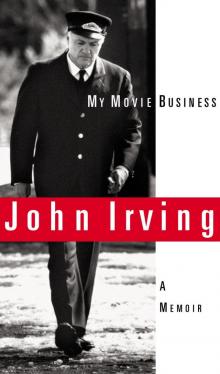 My Movie Business: A Memoir
My Movie Business: A Memoir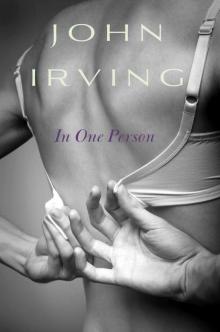 In One Person
In One Person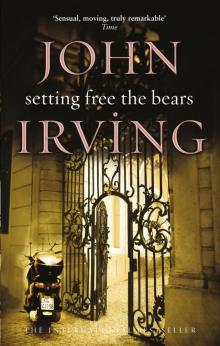 Setting Free the Bears
Setting Free the Bears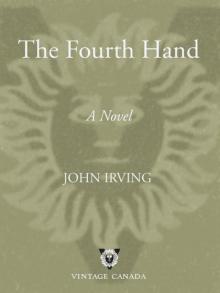 The Fourth Hand
The Fourth Hand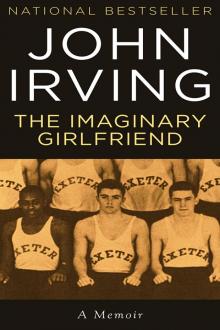 The Imaginary Girlfriend
The Imaginary Girlfriend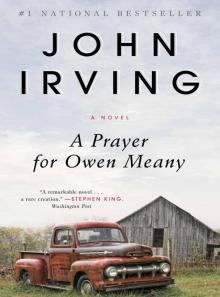 A Prayer for Owen Meany
A Prayer for Owen Meany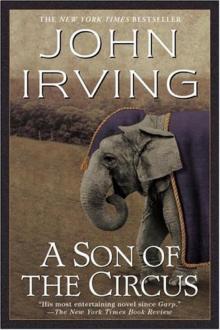 A Son of the Circus
A Son of the Circus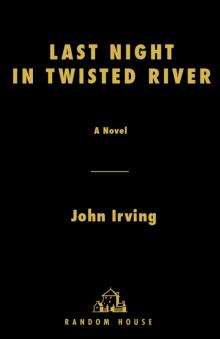 Last Night in Twisted River
Last Night in Twisted River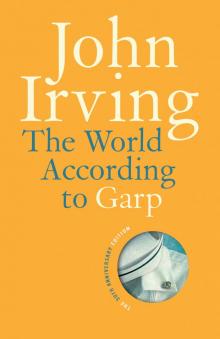 The World According to Garp
The World According to Garp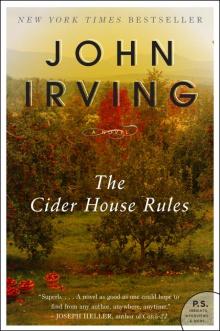 The Cider House Rules
The Cider House Rules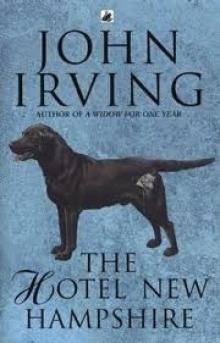 The Hotel New Hampshire
The Hotel New Hampshire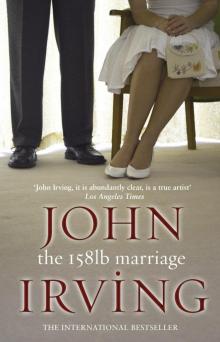 The 158-Pound Marriage
The 158-Pound Marriage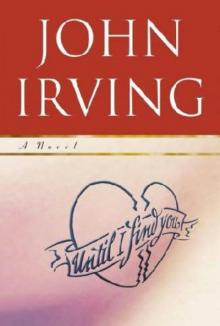 Until I Find You
Until I Find You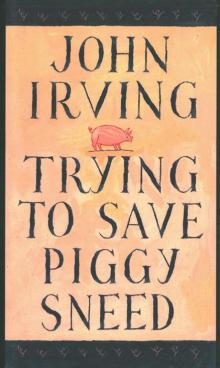 Trying to Save Piggy Sneed
Trying to Save Piggy Sneed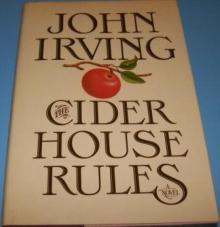 Cider House Rules
Cider House Rules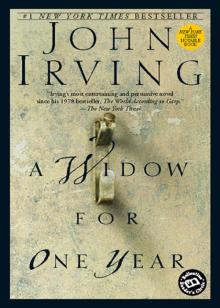 A Widow for One Year
A Widow for One Year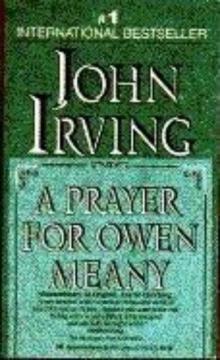 A prayer for Owen Meany: a novel
A prayer for Owen Meany: a novel (2005) Until I Find You
(2005) Until I Find You